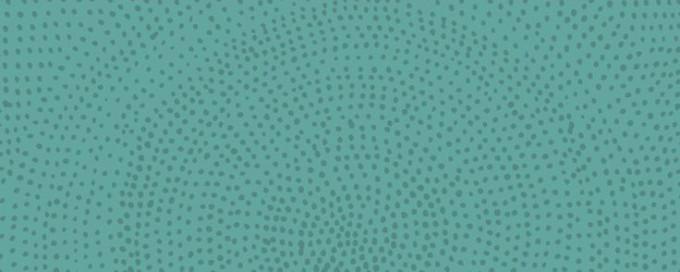
Get the latest articles delivered directly to your inbox!
Our Contributors
Class of 2022
Kyle Duke
Austin Foster
Charlotte Leblang
Ross Lordo
Class of 2021
Dory Askins
Connor Brunson
Keiko Cooley
Mason Jackson
Class of 2020
Megan Angermayer
Carrie Bailes
Leanne Brechtel
Hope Conrad
Alexis del Vecchio
Brantley Dick
Scott Farley
Irina Geiculescu
Alex Hartman
Zegilor Laney
Julia Moss
Josh Schammel
Raychel Simpson
Teodora Stoikov
Anna Tarasidis
Class of 2019
Michael Alexander
Caitlin Li
Ben Snyder
Class of 2018
Alyssa Adkins
Tee Griscom
Stephen Hudson
Eleasa Hulon
Hannah Kline
Andrew Lee
Noah Smith
Crystal Sosa
Jeremiah White
Jessica Williams
Class of 2017
Carly Atwood
Laura Cook
Ben DeMarco
Rachel Nelson
Megan Epperson
Rachel Heidt
Tori Seigler
Class of 2016
Shea Ray
Matt Eisenstat
Eric Fulmer
Geevan George
Maglin Halsey
Jennifer Reinovsky
Kyle Townsend
Join USCSOMG students on their journeys to becoming exceptional physician leaders.

Putting Myself in Her Shoes
My attending handed me Mrs. Green’s* (name changed to protect the patient’s privacy) chart, led me to the door, and entered the room to speak to the patient. I opened the chart and glanced at the first page: middle-aged female. BMI= morbidly obese. Chief complaint: chest pain and shortness of breath. As my attending exited the room, I entered and promptly greeted the patient, washing my hands, and sitting in a chair next to her bed.
One of our recent Medicine and Society lectures highlighted the importance of shared-decision making in medicine in today’s society. We learned the basics of the shared-decision making process, the steps in carrying it out, and tactics to encourage patients to think critically about decisions regarding their health and futures. Throughout high school and my undergraduate career, I visualized myself easily making important decisions together with my patients, concentrating on their personal wants and needs in the context of their specific situation and circumstances. I envisioned both parties always agreeing about the best option for the patient. I have learned now that most of these thoughts were fantasies; using the shared-decision making approach has the potential to be difficult, exhausting, and time-consuming in many situations.
As I began to ask Mrs. Green about her current symptoms, I quickly noticed her flat affect and low mood. I began with a few basic questions, “When did your chest pain begin?” “What did it feel like?” “Does the pain radiate anywhere else?” She answered all of my questions succinctly and promptly, avoiding eye contact and staring blankly at the TV. For the first time thus far in dealing with patients, I truly felt uncomfortable. I felt like I wasn’t connecting with this patient, and that I wasn’t doing my best. I was hesitant and shaky, and this frustrated me in a way I hadn’t experienced before. After about a minute, I took a breath, set down my clipboard and asked the patient what her favorite food was.
She looked me in the eye for the first time during our conversation. She replied, “Well, I just absolutely love turnip greens. And pizza. I love pepperoni pizza.” She smiled. It made me smile. We started talking about how her granddaddy made the best turnip greens and all of the great memories she had at his house before he passed away. The next thing I know, she was telling me that her favorite thing to do with him was watch UNC basketball games and cheer on her favorite players. I almost jumped out of my chair. There was our connection. Anyone who knows me in the slightest would agree that if anything gets me excited and fired up, it’s UNC basketball.
We ended up talking for just over an hour. During the rest of our conversation, I felt like I was talking to a different person—not the woman I was speaking with during those first five minutes. I left the room with three full sheets of paper outlining her current symptoms, past medical history, and surgical history. More importantly, I learned about her family’s health problems and how they affected her. I learned how this hospitalization was taking a toll on her emotionally and psychologically, not just biomedically. I learned that she had been diagnosed with depression shortly after her father died and hasn’t been the same since. “I have no desire to recover.” I will forever remember these words leaving Mrs. Green’s lips.
I never considered that some patients truly will not want to get well. I never considered that some patients would simply not care. I never considered those who do not have the ability or desire to heal timely and effectively. I never thought deeply enough about all of the circumstances and obstacles that can shape the shared-decision making process between a process and a physician. I have been blessed with a passion for living, and it is extremely hard for me to imagine not having hope or not wanting to fight and recover. How will I put myself in my patient’s shoes and cope with this throughout my career?
Become the patient. Realize what he or she is going through. Forget about myself, my family, and my circumstances, and become the patient. At this point in my medical education, this is what I hope to be able to do as a future physician. I know that doing this will be extremely time consuming and hard. It will take practice. I will fail. Frequently. Sometimes, the time and energy spent will result in nothing. The patient will continue to exhibit no hope or will to live. But other times, the gamble will be worth the payoff. Seeing hope and promise spark in my next struggling patient’s eyes will be enough to help me work harder to make connections and “become the patient” again and again.
I grew up in Charlotte, North Carolina before moving to Chapel Hill to spend my undergraduate career as a Tar Heel. I majored in biology, with a minor in chemistry, and consider myself extremely fortunate to have had many unique experiences in my life thus far. I worked as a research assistant at the North Carolina Jaycee Burn Center and in the Department of Genetics at UNC, interned with Carolinas Laparoscopic and Advanced Surgery Program (CLASP) at Carolinas Medical Center in Charlotte, and spent time as a member of a Global Medical Training team that set up temporary rural medical clinics in Panama. I thrive on adventure, am a travel enthusiast, and enjoy kayaking and exploring new places in my free time. I am passionate about improving quality of patient care, and hope to pursue a career in pediatric endocrinology, anesthesia, or internal medicine. I am honored and excited to be a part of the USCSOMG Class of 2018- a group of truly compassionate, intellectual, and driven individuals.
Kristin Lacey
Copyright 2021 USC School of Medicine Greenville


